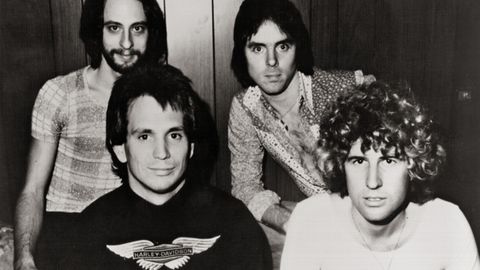In 1973, a new Californian band by the name of Montrose – led by the late, great, mercurial guitarist Ronnie Montrose – unleashed the greatest American hard-rock debut album of all time.
This self-titled triumph even eclipsed Van Halen’s first, which was five years into the future at this point. (Though, significantly, both were produced by sonic wizard Ted Templeman).
Thus anticipation was sky-high for Montrose’s second full-length, Paper Money (6⁄10), which hit the shops in ’74. But little did we know that, behind the scenes, the capricious Ronnie had decided his band’s music had become passé. As he’s quoted in the sleeve-notes: “I wanted to move away from the rather limiting style of the first record.” While drummer Denny Carmassi adds bemusedly: “Ronnie genuinely thought hard rock was finished.”
So the six-stringer snaffled himself a co-production credit with Templeman, fired his bass player, the estimable Bill ‘Electric’ Church, and fell out with his singer, a young Sammy ‘Sam’ Hagar. The result, as you’d expect, is patchier than a pirates’ convention, with only a single song – the gung-ho I Got The Fire – managing to replicate the livewire energy of past gems such as Bad Motor Scooter.
For their third album, ’75’s Warner Bros Presents Montrose! (6⁄10), Ronnie dispensed with Templeman’s services completely and self-produced. Two new band members also arrived: keysman Jim Alcivar and an unknown singer, Bob James. Cue swathes of synthesiser on Whaler – yes, this is indeed a tale of a grizzled old harpoon-wielding sea-dog – and a clutch of bizarre covers, including Alan Price’s O Lucky Man!. A glimmer of hope arrives in the form of Clown Woman – put those balloon animals down, missus, it’s actually about the evils of applying too much slap – but it’s too little, too late.
Montrose’s fourth album, Jump On It (7⁄10), came out in ’76. Ronnie hired a new producer, Jack Douglas, and the ship was duly steadied. Opener Let’s Go has the same sleazy groove that permeates the ’Smith’s Rocks album (also produced by Douglas and released in ’76) and closer Merry-Go-Round is a fine example of Bad Co-like strut’n’roll. But there remains some odd stuff in-between, including a couple of songs written by Dan Instant Replay Hartman (a fellow Edgar Winter Group alumnus) and Tuft-Sedge, a classy instrumental that’s inexplicably named after a grassy flowering plant.
At the tail-end of the 70s the guitarist put Montrose on hold and formed Gamma, where things would get even weirder. But that’s another story.


